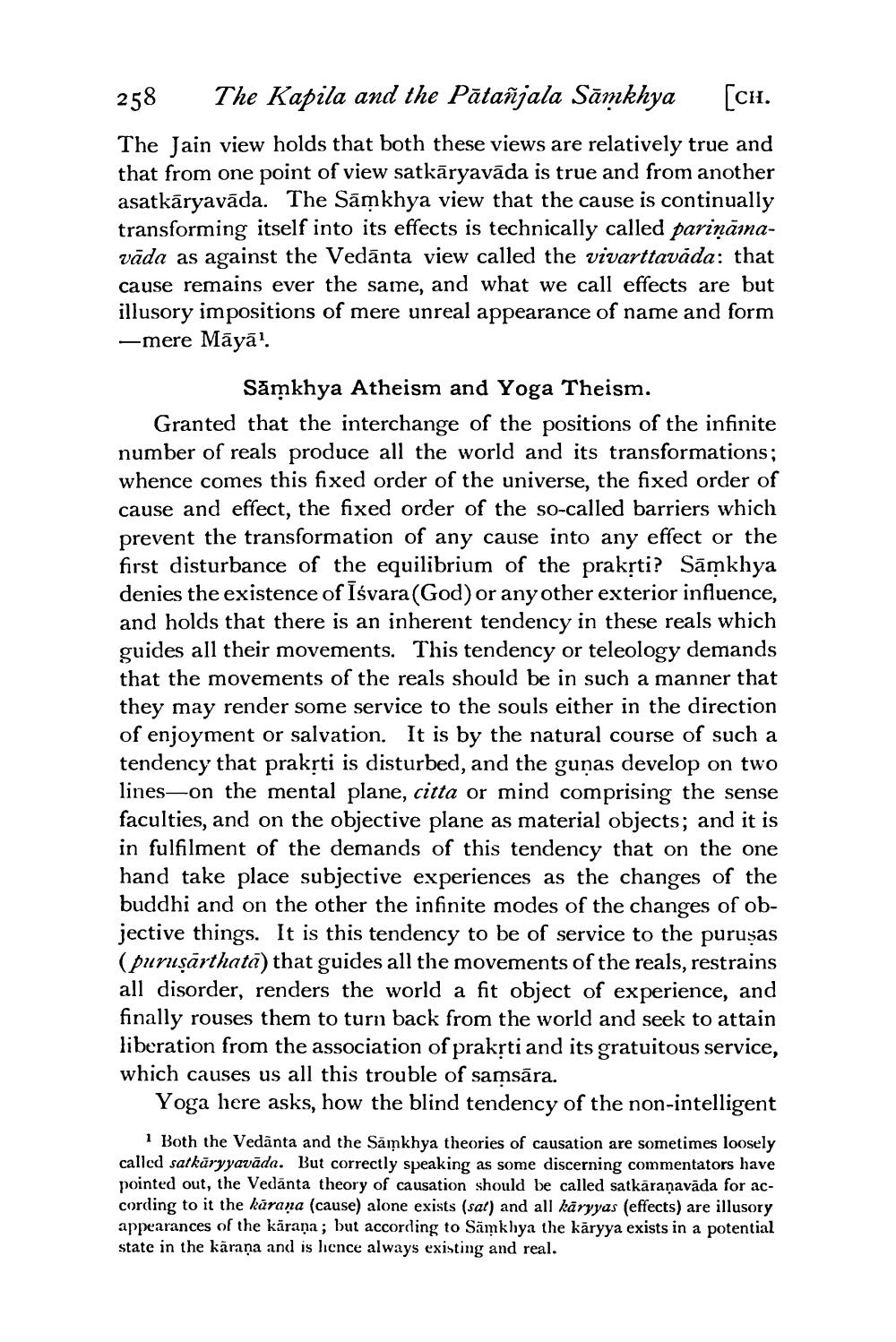________________
258 The Kapila and the Pātañjala Sāmkhya [ch. The Jain view holds that both these views are relatively true and that from one point of view satkāryavāda is true and from another asatkāryavāda. The Sāmkhya view that the cause is continually transforming itself into its effects is technically called pariņāmavāda as against the Vedānta view called the vivarttavāda: that cause remains ever the same, and what we call effects are but illusory impositions of mere unreal appearance of name and form -mere Māyā!
Samkhya Atheism and Yoga Theism. Granted that the interchange of the positions of the infinite number of reals produce all the world and its transformations; whence comes this fixed order of the universe, the fixed order of cause and effect, the fixed order of the so-called barriers which prevent the transformation of any cause into any effect or the first disturbance of the equilibrium of the praksti? Sāmkhya denies the existence of īśvara(God) or any other exterior influence, and holds that there is an inherent tendency in these reals which guides all their movements. This tendency or teleology demands that the movements of the reals should be in such a manner that they may render some service to the souls either in the direction of enjoyment or salvation. It is by the natural course of such a tendency that praksti is disturbed, and the guņas develop on two lines on the mental plane, citta or mind comprising the sense faculties, and on the objective plane as material objects; and it is in fulfilment of the demands of this tendency that on the one hand take place subjective experiences as the changes of the buddhi and on the other the infinite modes of the changes of objective things. It is this tendency to be of service to the purusas (puruşārthată) that guides all the movements of the reals, restrains all disorder, renders the world a fit object of experience, and finally rouses them to turn back from the world and seek to attain liberation from the association of prakrti and its gratuitous service, which causes us all this trouble of samsāra.
Yoga here asks, how the blind tendency of the non-intelligent
1 Both the Vedānta and the Samkhya theories of causation are sometimes loosely called satkūryyavāda. But correctly speaking as some discerning commentators have pointed out, the Vedānta theory of causation should be called satkāraņavāda for according to it the karana (cause) alone exists (sal) and all käryyas (effects) are illusory appearances of the käraņa; but according to Sâmkhya the käryya exists in a potential state in the käraña and is licnce always existing and real.




